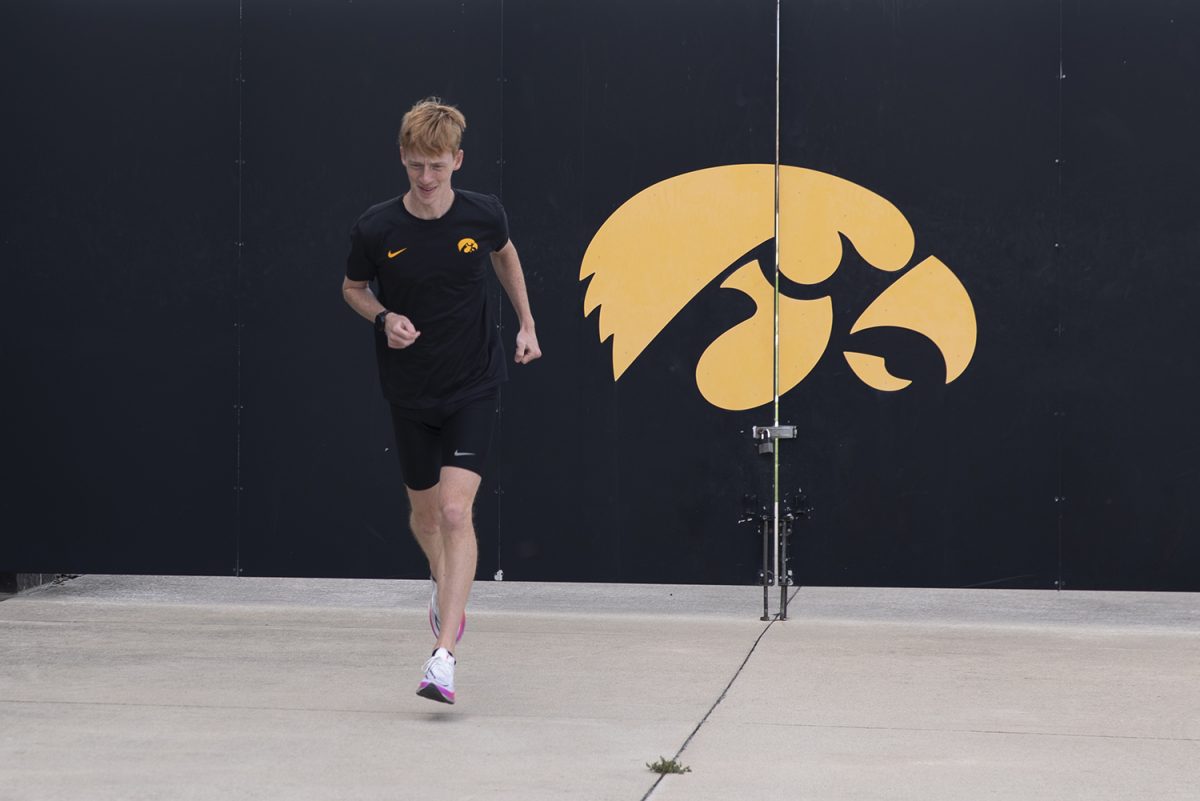Time will tell whether Iowa’s recent two-game losing streak is a sign of what’s to come from the 13-7 Hawkeyes or merely an aberration.
What is known is through the first seven games of the Big Ten season, Iowa’s style of play has vastly differed from the beginning of the season.
It’s nothing drastic, but when facing competition such as No. 5 Wisconsin — as Iowa will do Saturday — or anyone in the Big Ten for that matter, the difference between a few points can be the difference between winning and losing a game.
And as Iowa nears closer to the end of the season, those games are beginning to hold more and more weight.
Conference points allowed per game — 70 points per game (13th in the Big Ten)
In the nonconference season, Iowa hung its hat on its defense. It gave up just 58.8 points per game, allowing its offense to find its footing while not doing too much damage to Iowa’s win-loss column.
It’s been a different story in conference play. The Hawkeyes are allowing the second-worst points per game in the Big Ten, with the only team allowing more being Indiana. The Hawkeyes let teams shoot 45.5 percent from the field, 35 percent from 3-point range.
There could be several explanations for this spike. First, the obvious one: Conference play typically yields tougher competition, and in Iowa’s case, teams such as Wisconsin, Ohio State, and Michigan State are sure to inflate those stats.
Second, Iowa made a personnel decision following its loss to Northern Iowa. Head coach Fran McCaffery put in guard Peter Jok for Anthony Clemmons in the starting lineup.
The hope was that it would provide a spark on offense, and it has for the most part. But while Jok has certainly improved on the defensive side of the ball, he’s no Clemmons, who basically built his identity around defense.
Conference free-throw percentage — 69.9 percent (eighth in the conference)
No one in Iowa’s program is going to press the panic button over the Hawkeyes hitting a rough patch at the charity stripe in the beginning of conference play. However, if this trend continues, it could be troubling.
So much of Iowa’s offense — and its success — revolves around getting to the free-throw line and racking up free points. In the Hawkeyes’ 13 wins this season, they got to the line an average of 24.5 times per game. In the losses, they stood there only 19.8 times.
Likewise, when Iowa wins, it makes an average of 18.9 free throws per game. And when it loses, it makes 13.5 free throws per game. That 5-point difference can play a big factor, especially against Big Ten teams.
Mike Gesell’s conference stat line — 7.9 points, 3 assists, and 2.3 rebounds per game, 47.8 field-goal percentage
Perhaps no one on Iowa’s roster fits the role of the X-factor more than junior guard Mike Gesell.
When he’s offensively productive, Iowa’s offense looks as efficient as can be. When he’s not, it can look stale and stagnant.
The good news for the Hawkeyes is that recently, Gesell has played well. Basically, every part of Gesell’s game has improved since his shaky nonconference play. He’s averaging more points per game, and more importantly, he does so in a much more efficient manner.
Gesell’s not alone. Basically, every Iowa guard who sees significant playing time has begun to shoot the ball better from the field. Some at a higher rate than others, though.
Gesell doesn’t have to a sharpshooter from the 3-point line to be help Iowa’s offense. But being a threat is simply a huge contribution, be it on a drive and kick or as the ball-handler on a pick-and-roll.
Bottom line: When Gesell plays well, typically, Iowa does.






